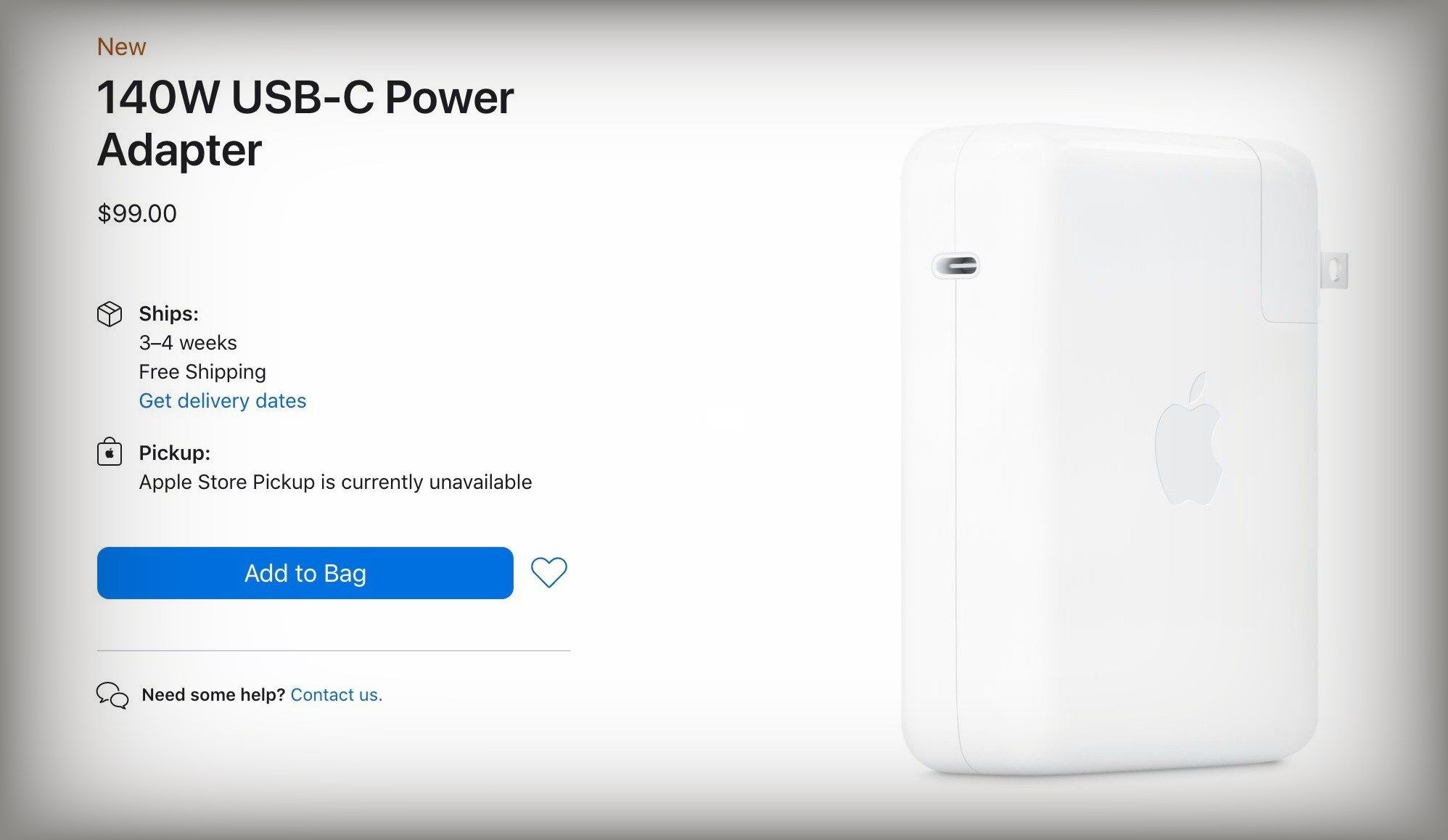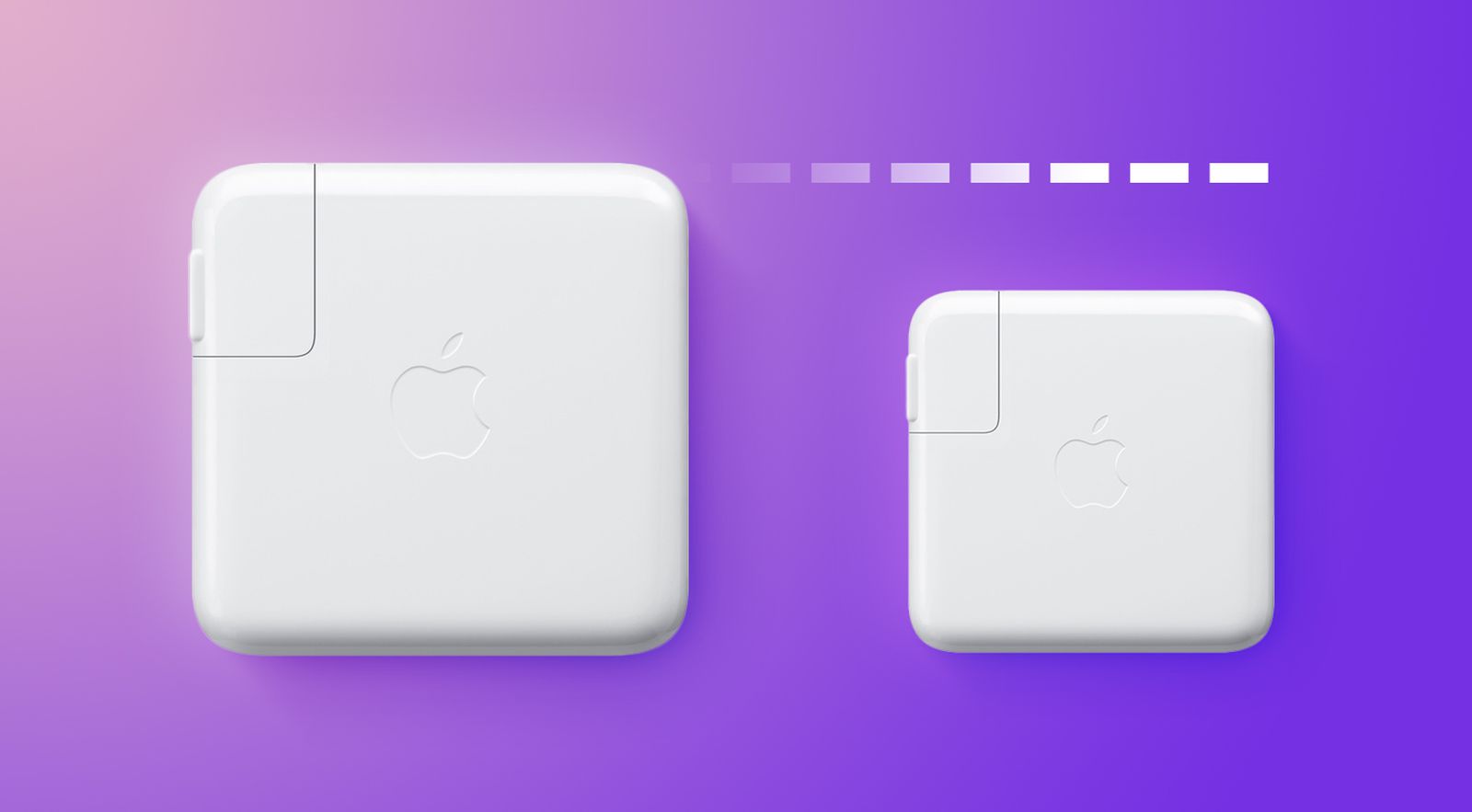Anker already has a pretty good lineup of such chargers and they are likely considerably cheaper than an Apple-branded one would be. We'll see if this one turns out to be true I guess.
Got a tip for us?
Let us know
Become a MacRumors Supporter for $50/year with no ads, ability to filter front page stories, and private forums.
Kuo: Apple Planning Smaller 30W Power Adapter With New Design
- Thread starter MacRumors
- Start date
- Sort by reaction score
You are using an out of date browser. It may not display this or other websites correctly.
You should upgrade or use an alternative browser.
You should upgrade or use an alternative browser.
Nice so since removing the charger from the box like 2 years ago we'll have 3 new chargers? (18w 20w and now this?) each time there's some incompatibility with accessories and stuff with fast charging.
Maybe they'll start a charger upgrade program soon to go along with iPhone lol
Maybe they'll start a charger upgrade program soon to go along with iPhone lol
Anker is already working GaN type two devices which will be even smaller. It's my understanding from the "decoder" podcast they have some patents in place on this technology that will allow them to stay a year to two ahead of the competition.
Yeah I had the Anker 30 watt PD1 for a few years now. Mine has stopped working correctly, however. It starts charging then stops for no reason. Bit of a letdown. I have since bought the 65 watt pod charger though and it is currently working, it's basically a little larger than the Apple 20 watt charger but has 65 watts of power, enough for laptops.Didn't Anker kinda do this all ready like two years ago?
LOL this thing is such a POS, Apple should be ashamed. I've been using Anker's cheaper, smaller and all around better plugs for a couple years now. Didn't even bother to unwrap the plugs that came with my 2021 iPad Pro or M1 MBA. I charge both with the same 30w Anker plug, and my iPhone 13 with a 20w Anker plug.
Sure, right after 4 attendants greet you at the gas station and all get to work on your vehicle.Great! Now put it in the iPhone box!
Attachments
Great! Now put it in the iPhone box!
Better yet...pay for it if you need it.
No doubt there will be entitled people who want free stuff. Just because.
Anker doesn't make a GaN travel charger.... Looks like Apple isn't either in this caseAnker already has a pretty good lineup of such chargers and they are likely considerably cheaper than an Apple-branded one would be. We'll see if this one turns out to be true I guess.
With the 16-inch MBP’s that provides 140W.More importantly ..
since WHEN did Apple have their own branded GAN charger?!!!
I mean it's great that Apple is doing this, but as others have said, Anker already makes these with multiple ports and it's likely significantly cheaper than Apple's. I've never had a problem with Anker's products.
Most likely still won't be smaller than Anker Nano II 45W - the best & smallest "serious power" I've had so far. Also not sure why Apple packs just 30W charger with Macbook Air M1, when it's able to use ~45W for faster charging.
Last year with the 140W GaN changer they made for the 16 inch MBP. It was one of the first USB-C chargers that could output more than 100W from a single port.More importantly ..
since WHEN did Apple have their own branded GAN charger?!!!
Really wish they would bring back the 12W iPad adapter or MacBook charger design with the detachable duck head. I hate not being able to attach my 6 ft extensions to my 18W adapters.
It will be white again.The design of the charger is so bland and uninspired, the absence of Jony Ive is truly felt.
Which will probably be $10 more.
More smoke and mirrors from Apple.
They say: “we’re ditching USB chargers for the environment.”
They mean: “we’ve made the boxes smaller to save on shipping costs. You have to spend an extra $20 on a USBC charger because all your old ones are USBA. Oh, and we’ve not knocked $20 off the cost of the phone.”
More smoke and mirrors from Apple.
They say: “we’re ditching USB chargers for the environment.”
They mean: “we’ve made the boxes smaller to save on shipping costs. You have to spend an extra $20 on a USBC charger because all your old ones are USBA. Oh, and we’ve not knocked $20 off the cost of the phone.”
Are you certain with proof that it is a GAN charger?With the 16-inch MBP’s that provides 140W.
With the 16-inch MBP’s that provides 140W.
Last year with the 140W GaN changer they made for the 16 inch MBP. It was one of the first USB-C chargers that could output more than 100W from a single port.
definition:
Gallium nitride, or GaN, is a material that's starting to be used for semiconductors in chargers. It was used to make LEDs starting in the '90s, and it's also a popular material for solar cell arrays on satellites. The main thing about GaN when it comes to chargers is that it produces less heat. Less heat means components can be closer together, so a charger can be smaller than ever before—while maintaining all the power capabilities and safety standards.
Neither Apple‘s 140W,
140W USB-C Power Adapter
The 140W USB-C Power Adapter offers fast, efficient charging at home, in the office or on the go for your 16-inch MacBook Pro (M1, 2021). Buy now.
www.apple.com
Nor the 96W charges on their product page states either is a GAN charger.
96W USB-C Power Adapter
The 96W USB-C Power Adapter offers fast, efficient charging at home, in the office or on the go. While this power adapter is compatible with any USB-C–enabled device, Apple recommends pairing it with your 16-inch MacBook Pro for optimal charging performance.
www.apple.com
edit:

Apple's 140W Power Adapter is Company's First GaN Charger, Supports USB-C Power Delivery 3.1
Apple has confirmed to The Verge that its new 140W USB-C power adapter is the company's first charger based on gallium nitride or "GaN" technology, which allows for smaller, lighter, and more power efficient chargers than silicon-based chargers. Without the use of GaN, the 140W power adapter...
links to

Apple Reportedly Planning Smaller and Lighter GaN-Based Chargers
Navitas Semiconductor is expected to obtain orders from Apple in 2021 for fast charging solutions based on gallium nitride or "GaN" technology, according to Taiwanese industry publication DigiTimes. The report claims that Apple's chipmaking partner TSMC will supply Navitas with GaN chips as part...
links to

Unikorn to begin production of 100W GaN-on-Si chips
Unikorn Semiconductor, a provider of foundry services for III-V compound semiconductor components, will extend production of GaN-on-Si chips for fast charging devices from 65W chips to 100W ones in second-half 2021, according to Lee Biing-jye, chairman of Epistar, the parent company of Unikorn.
www.digitimes.com
without a subscription to the final link not once is there a proper confirmation by Apple in print stating either is a GAN charger just a statement that 1 source confirmed yet said source is not linked to show from the horses mouth. I have issue with this type of reporting.
From a link here on MacRumorsAre you certain with proof that it is a GAN charger?

Apple’s new 140W charger can fast charge a lot more than just your MacBook Pro
You won’t be limited to Apple’s hardware for fast-charging.
As well as its use of the USB-C PD 3.1 standard, Apple also confirmed that the brick is its first gallium nitride (GaN) charger, which means it’s using the material that allows companies to build higher-powered chargers that are smaller in size than their traditional counterparts.
Have I torn one open to prove it? Nope, but there are folks on the internet that have, not hard to find.
I literally typed “Apple GAN Charger” into Google and got the result from here at MacRumors. I didn’t think that “knowing what to type into the search field” was that much of a “skill” per se, but perhaps it is.definition:
Neither Apple‘s 140W,

140W USB-C Power Adapter
The 140W USB-C Power Adapter offers fast, efficient charging at home, in the office or on the go for your 16-inch MacBook Pro (M1, 2021). Buy now.www.apple.com
Nor the 96W charges on their product page states either is a GAN charger.

96W USB-C Power Adapter
The 96W USB-C Power Adapter offers fast, efficient charging at home, in the office or on the go. While this power adapter is compatible with any USB-C–enabled device, Apple recommends pairing it with your 16-inch MacBook Pro for optimal charging performance.www.apple.com
At 30 watts, I'm guessing this is aimed at phones and iPads, not at MacBooks. Still, USB-C seems likely.There is no USB Type A MacBook charger.
See my latest post.From a link here on MacRumors

Apple’s new 140W charger can fast charge a lot more than just your MacBook Pro
You won’t be limited to Apple’s hardware for fast-charging.www.theverge.com
Have I torn one open to prove it? Nope, but there are folks on the internet that have, not hard to find.
nothing specific in that above link I posted that just before you did.
it's mentions someone else stated Apple confirmed, no actual confirmation directly from Apple.
Register on MacRumors! This sidebar will go away, and you'll see fewer ads.


